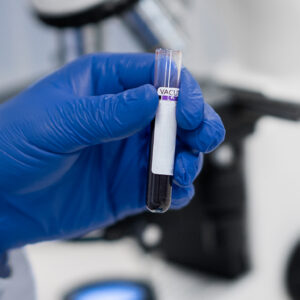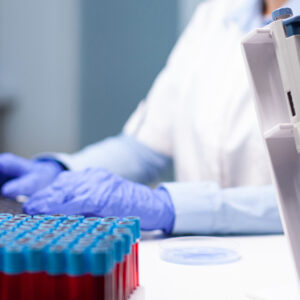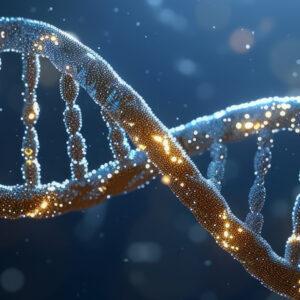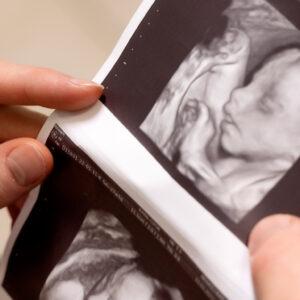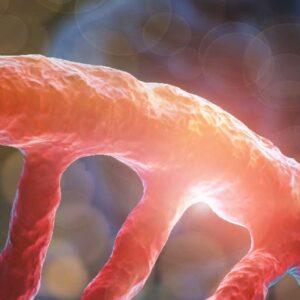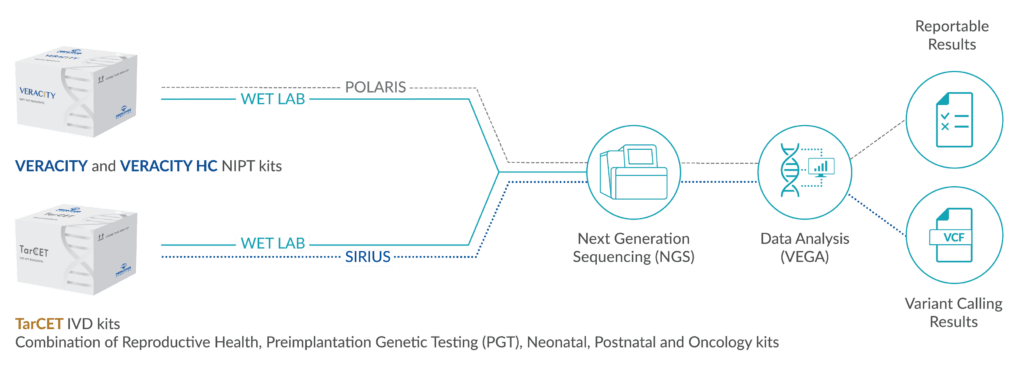Autosomal recessive primary microcephalies (MCPH) are very rare disorders. In the Central European population, the frequency is about 1:1 million, and in Pakistan it is about 1:10,000. The disorders are characterized by a head circumference at birth or in the last trimester of pregnancy that is at least two standard deviations (SD) below the median value. At the age of 6 months, the deviation can be -3 standard deviations or more.
It is a heterogeneous group of diseases whose genes are partially known.
The diagnostic criteria are:
- head circumference of -2 SD at birth and under -3 SD within the 1st year of life;
- impaired cognitive development, minimally impaired motor development with language development delay and attention deficit;
- no serious neurological symptoms other than seizures in about 10%;
- no serious malformations, only discrete signs of dysmorphia due to microcephaly, such as a narrow receding forehead and occasional dwarfism with body measurements also between the 2nd and 3rd SD below the median;
- reduction of the brain volume, which affects both the white and grey matter, whereby the cerebral cortex can present a simplified gyration. In addition, signs of neuronal migration disturbances, such as periventricular heterotopias, cortical dysplasia or polymicrogyria, can also be found. This is especially true for MCPH2 (pathogenic variants in WDR2), in which schizencephaly and lissencephaly can also occur.
The proteins encoded by the microcephaly genes are centrosomal proteins whose alterations cause an imbalance between the cell proliferation of neuronal progenitor cells and cell death, ultimately leading to a reduced number of neurons and a smaller brain volume. There is an allele of MCPH6 for Seckel syndrome type 4 and MCPH9 for Seckel syndrome type 5, since loss-of-function variants in CENPJ and CEP152, respectively cause these forms of Seckel syndrome. Clinical overlaps exist with microcephalic osteodysplastic primordial dwarfism (MOPD2), which differs from Seckel syndrome through its more pronounced short stature, less pronounced developmental delay and radiological abnormalities. MOPD2 is caused by loss-of-function variants in the pericentrin gene. Pericentrin is also a centrosomal protein that plays an essential role in the organization of the mitotic spindles and thus in cell division.
Since there is little difference clinically between the individual forms of autosomal recessive primary microcephalies, molecular genetic diagnostics using NGS (gene panel diagnostics) can be used to identify a causative pathogenic variant and facilitate diagnosis.
References
Zaqout et al. 2017, Neuroped 48:135 / Passemard et al. 2013, Handb Clin Neurol III:129 / Hussain et al. 2012, Am J Hum Genet 90:871 / Genin et al. 2012, Hum Mol Genet 21, 24:5306 / Mahmood et al. 2011, Orphanet J Rare Dis 6:39 / Kaindl et al. 2010, Prog Neurobiol 90:363 / Kousar et al. 2010, J Child Neurol 25:715 / Willems et al. 2010, J Med Genet 47:797 / Rauch et al. 2008, Science 319:816 / Woods et al. 2005, Am J Hum Genet 76:717 / Neitzel et al. 2002, Am J Hum Genet 70:1015
KABUKI SYNDROME
Kabuki syndrome is a characteristic combination of small physical features, malformations and a developmental disorder; failure to thrive is often also seen in infancy and toddlerhood. The characteristic craniofacial features are: laterally elongated eyelid crevices with eversion of the lateral lower lid; arched, laterally sparse eyebrows, often with a hairless narrow area in the middle; a short columella and a flat-looking tip of the nose; poorly shaped, large earlobes; fetal fingertip pads on the hands; brachydactyly V; and occasionally cleft palate or lip-jaw-palate cleft. Initially, muscular hypotonia, extreme failure to thrive that requires tube feeding, and a heart defect may be at the forefront, later a moderate developmental delay, increased otitis media and infections are seen, as well as seizures in some patients.
Kabuki syndrome is caused by heterozygous pathogenic variants in the KMT2D gene in about 60% of cases, and rarely by pathogenic changes in KDM6A on the X chromosome. In some cases no cause has been found, so that genetic heterogeneity is suspected.
References
Adam et al. 2019 J Med Genet 56:89 / Micale et al. 2011, Orphanet J Rare Dis 6:38 / Miyake et al. 2013, Am J Med Genet A 161A:2234 / Adam et al. 2011, GeneReviews „Kabuki syndrome“
MOWAT-WILSON SYNDROME
In 1998 Mowat and Wilson described a new syndrome with a developmental disorder, microcephaly and characteristic external features in combination with Hirschsprung disease.
Characteristic external features of Mowat-Wilson syndrome (MWS), some of which become more pronounced with age, include high forehead with frontal bossing; uplifted earlobes with a central depression; diffuse, medially sparse eyebrows; widely-spaced, deep-set eyes; a broad nasal root; rounded nasal tip with prominent columella; M-shaped upper lip; a prominent, pointed chin; excess soft tissue of the neck; and long, slender fingers. Most of the affected individuals develop microcephaly and half of them have a final height below the 3rd percentile. About 80% have epilepsy which usually starts at the age of 2. Malformations include hypoplasia or agenesis of the corpus callosum, heart defects, and genitourinary malformations, especially hypospadias. About half of the patients have proven Hirschsprung disease, and a further portion have a chronic constipation.
In most cases, there is a severe global developmental disorder. On average, the affected children learn to walk between the ages of 4 and 6. The gait pattern often remains wide-based with raised, bent arms. Speech development is severely impaired or absent with many affected individuals knowing only a few words. The children are often described as cheerful and laughing frequently.
Differential diagnoses include Angelman syndrome and Pitt-Hopkins syndrome.
The disease is caused by haploinsufficiency of the ZEB2 gene in 2q22.3 due to pathogenic variants (nonsense or frameshift) (over 80%) or deletions (about 15%). The ZEB2 protein is a transcription factor that is important for the development of the neural crest and its derived structures; this may explain the frequent occurrence of Hirschsprung disease.
Since pathogenic variants in the ZEB2 gene usually occur de novo, the recurrence risk for siblings is low unless a somatic or germ cell mosaic has been detected in one parent.
References
Ivanovski et al. 2018, Genet Med 20:965 / Kilic et al. 2016, J Child Neurol 31:913 / Evans et al. 2012, Am J Med Genet 158A:358 / Garavelli et al. 2009, Am J Med Genet 149A:417 / Adam et al. 2007 Mar 28 [Updated 2019 Jul 25]. In: Adam MP, Ardinger HH, Pagon RA, et al., editors. GeneReviews® [Internet]. Seattle (WA): University of Washington, Seattle; 1993-2021 / Zweier et al. 2005, Eur J Med Genet 48:97 / Wilson et al. 2003, Am J Med Gent 119A:257 / Mowat et al. 2003, J Med Genet 40:305 / Zweier et al. 2002, Am J Med Genet 108:177







